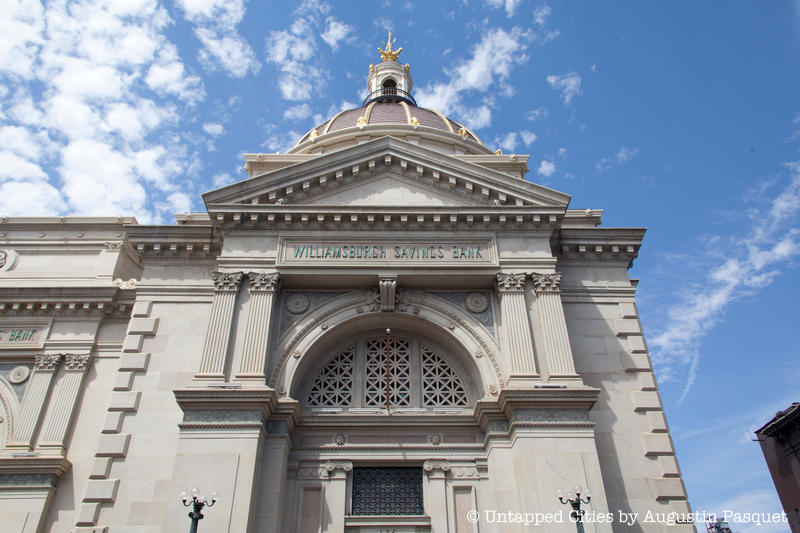7. Williamsburgh Savings Bank

One of only two surviving buildings by George B. Post, the Williamsburgh Savings Bank is one of the earliest and finest examples of Beaux-Arts architecture in New York City. It was built in 1875, shortly after the erection of the Williamsburg Bridge turned the neighborhood into a thriving industrial center. Unlike other banks at the time, the Williamsburgh Savings Bank allowed its customers to deposit small sums of money, a policy that contributed to its enormous growth and success.
When the bank’s trustees decided to construct a new building, they turned to Post, an apprentice of Richard Morris Hunt and one of the leading architects of the time. He designed it in a combination of ancient Roman and Italian Renaissance styles, with a monumental dome modeled on Brunelleschi’s Duomo in Florence. Peter Bonnet Wight designed the interiors in the High Victorian Gothic style, with the dome painted a celestial blue with geometric motifs and offices decorated with mahogany paneling, Victorian wallpaper, and mosaic floors. After years of neglect, the building was restored to its former glory and now houses an event space called Weylin B. Seymour.





